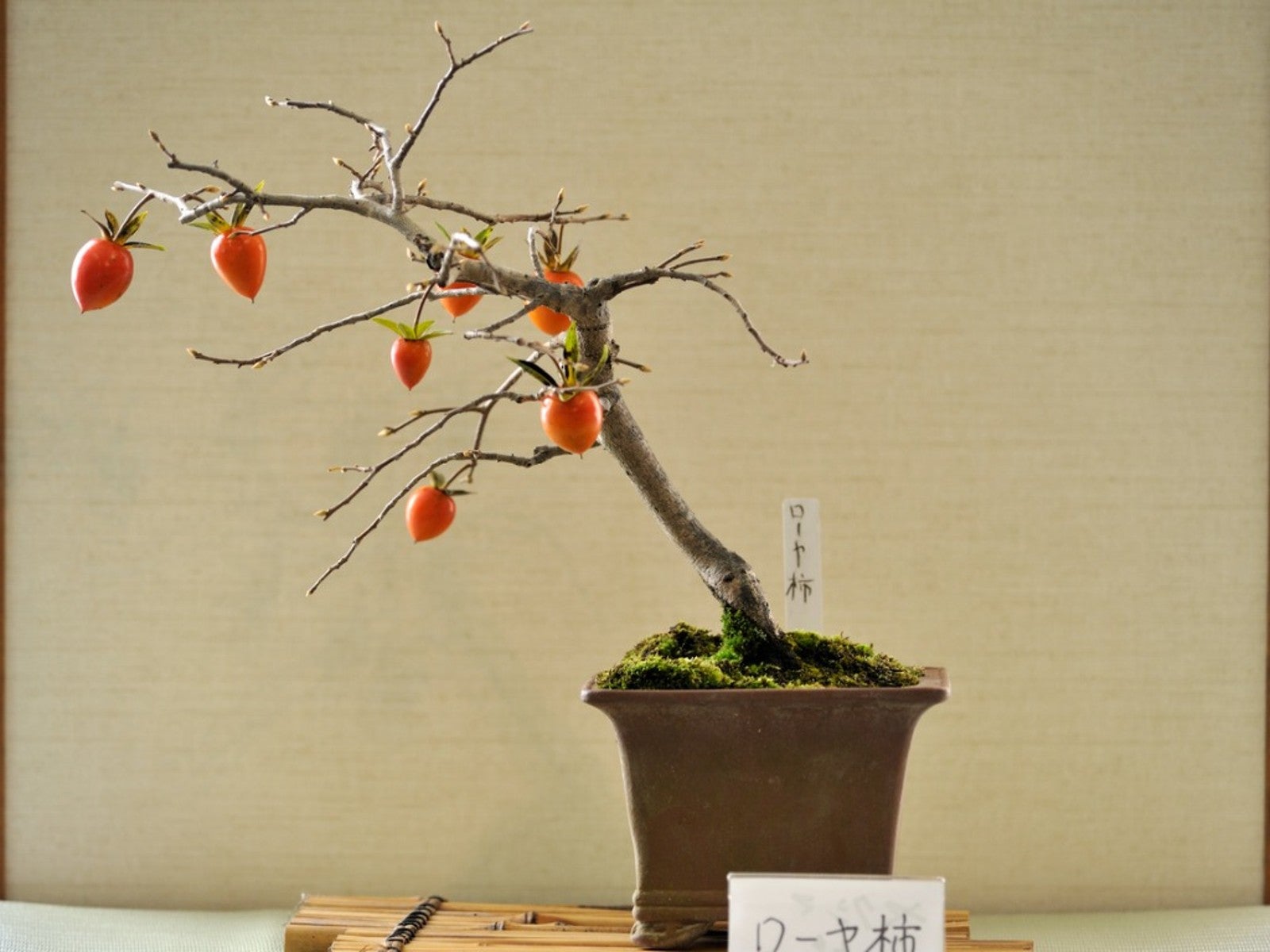How To Grow A Persimmon Bonsai Tree


Are you looking for a unique indoor plant that will light up your home in season? We’ve got just what you need: a bonsai persimmon crafted from a Princess Persimmon specimen. These persimmons produce tiny bright fruit which, together with their diamond-shaped leaves, can create a stunning miniature persimmon tree.
Creating a dwarf persimmon tree is also an interesting project and lots of fun. How do you keep a persimmon tree small? Read on for the juicy details.
Small Persimmon Tree
Although we usually recommend planting native trees, when it comes to a bonsai persimmon, we don’t recommend the American native, Diospyros virginiana. American persimmon trees can grow to well over 135 feet (45 m.) tall. If you start with a small persimmon tree, it will require less effort to create a bonsai persimmon.
One species to consider is a princess persimmon (Diospyros rhombifolia). Naturally small, it also bears small fruit in bright shades of orange red. It is popular for bonsai because of its size, attractive fruit, and ease of propagation.
Propagating a Persimmon
You will want to use a female tree for a miniature persimmon, since only females bear fruit and a small tree with fruit is much more attractive than a small tree without fruit. That makes growing the tree from seed problematic.
If you try to grow a princess persimmon from seed, there is no way to determine whether the seedling is a male or female plant for many years. Waiting all those years to determine it is a non-fruiting male is enough to make many gardeners renounce the project.
The key to creating a bonsai persimmon in a reasonable time frame is to propagate it by root cutting. A root cutting produces a clone of the parent tree, which means that a cutting from a female princess tree will produce another female princess persimmon.
Sign up for the Gardening Know How newsletter today and receive a free copy of our e-book "How to Grow Delicious Tomatoes".
As soon as a fruiting persimmon tree produces pencil-sized roots, remove one or more to create new plants for bonsai.
Understand Bonsai Techniques
If you’ve never done bonsai before, it’s a good idea to read some articles about the art, or even to take a class. Bonsai is pronounced bone sigh, with the first word meaning pot and the second meaning plant. Bonsai described both the plant being miniaturized and the technique used to keep it small.
Although the Japanese perfected the art of bonsai, this method of keeping trees small enough to show them off in containers in courtyards originated in China. Today the art of bonsai is a popular hobby in the United States.
Bonsai trees are miniatures, carefully pruned to create an appealing structure. How do you keep a persimmon tree small? The process involves both astute and meticulous trimming as well as wiring branches into places where they create a balanced branch structure. There are many classic forms of bonsai including upright, slanting, cascade, and clump.
To get started on a dwarf persimmon tree, determine the bonsai style that appeals to you, then begin the pruning process. Prune out any dead branches, then branches that don’t work with your plan. Wire branches to be adjusted carefully since they can be brittle. It pays to use both hands to wrap the wire.

Teo Spengler is a master gardener and a docent at the San Francisco Botanical Garden, where she hosts public tours. She has studied horticulture and written about nature, trees, plants, and gardening for more than two decades, following a career as an attorney and legal writer. Her extended family includes some 30 houseplants and hundreds of outdoor plants, including 250 trees, which are her main passion. Spengler currently splits her life between San Francisco and the French Basque Country, though she was raised in Alaska, giving her experience of gardening in a range of climates.